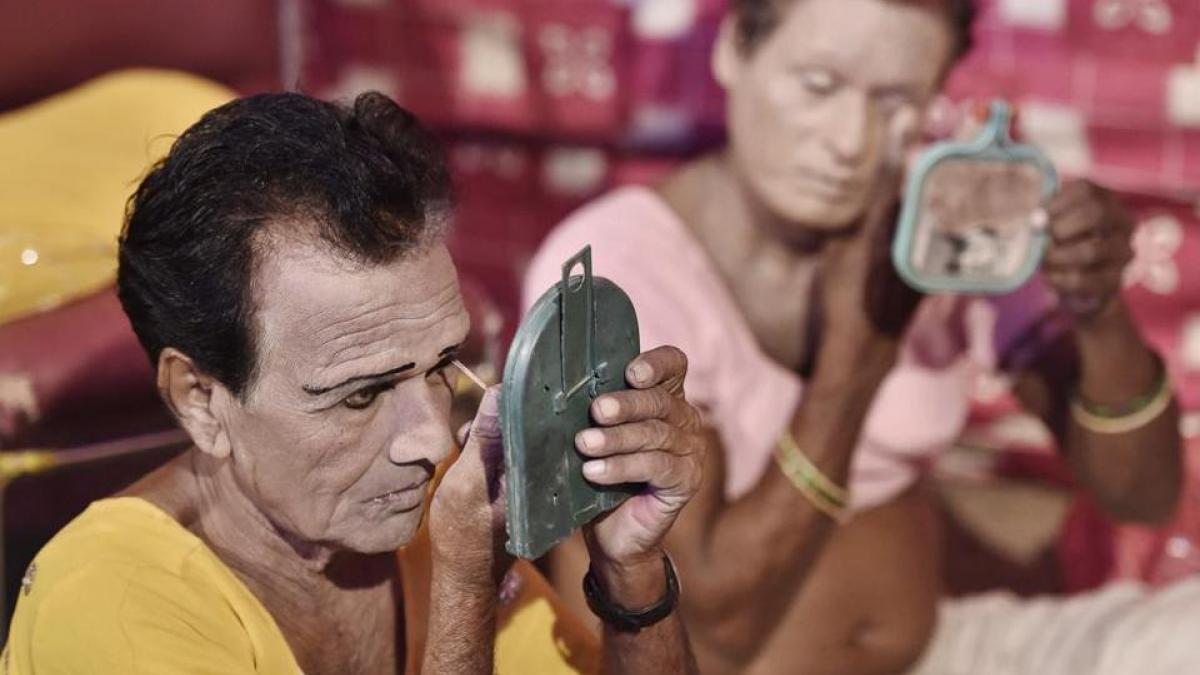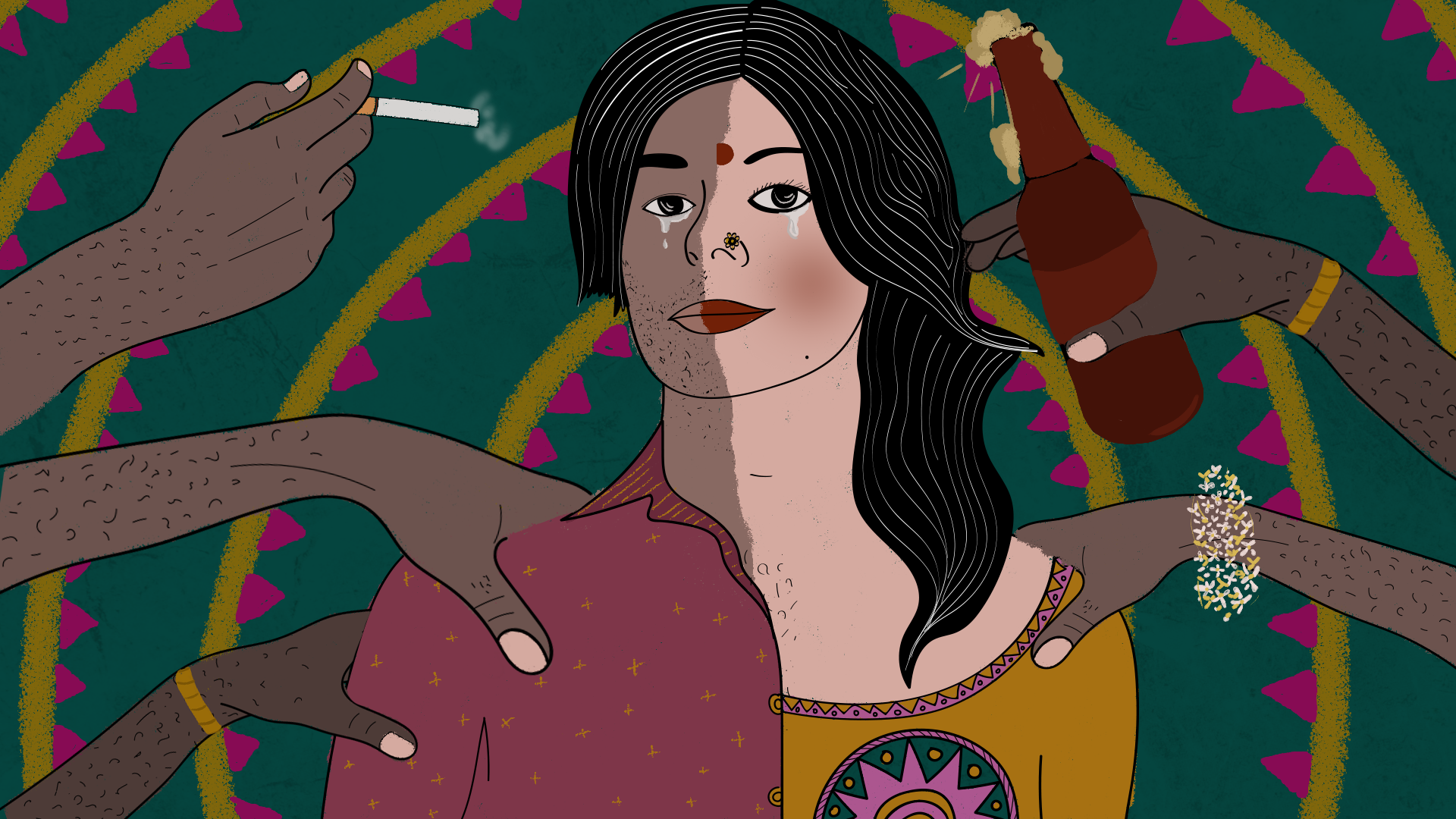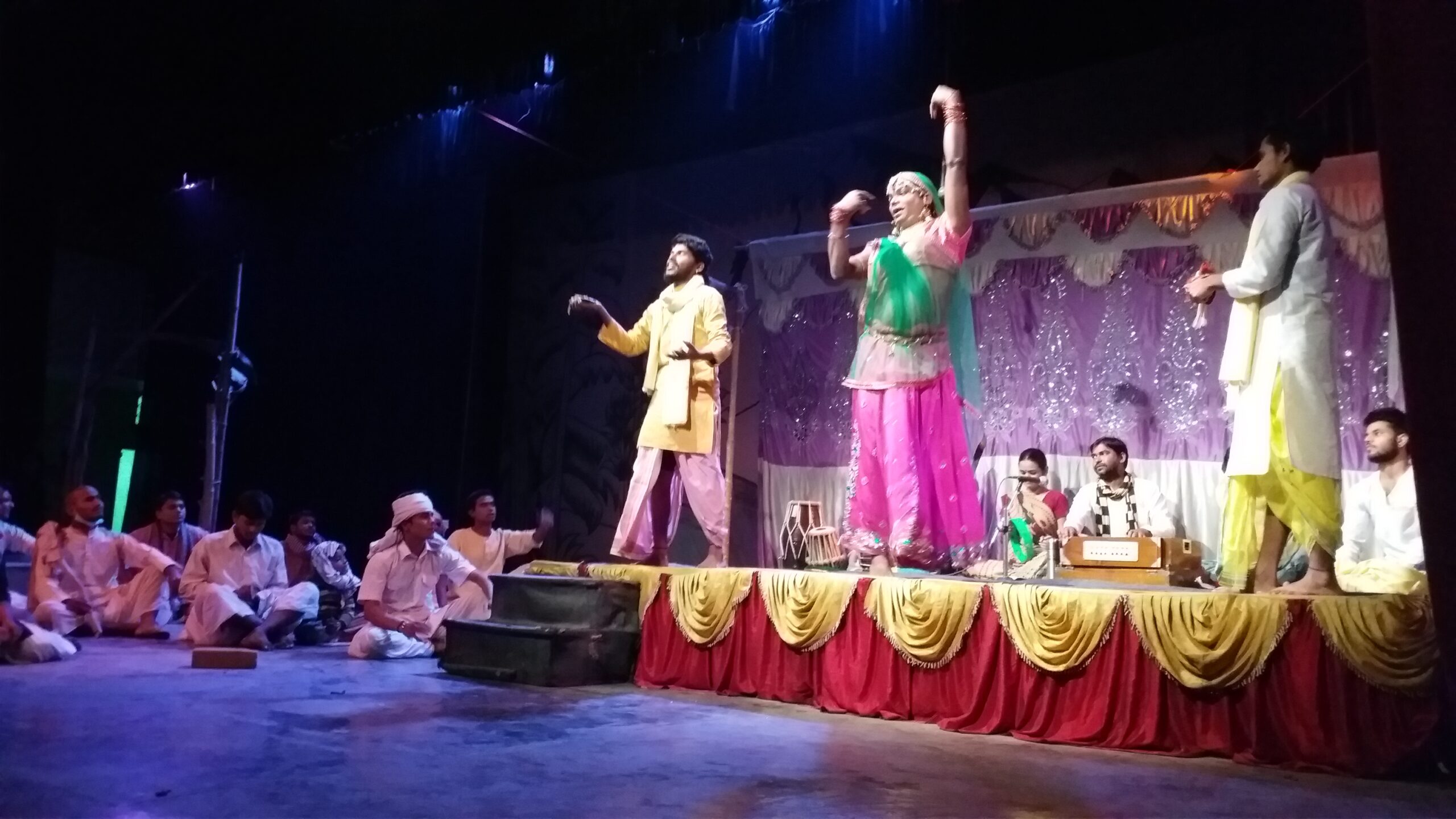Editor’s Note: FII’s #MoodOfTheMonth for June 2022 is Pride Solidarity. We invite submissions on the many layers of this theme throughout the month. If you’d like to contribute, kindly refer to our submission guidelines and email your articles to sukanya@feminisminindia.com
A Pink Line, based on the LGBTQIA+ movement has been drawn that has described the world in an entirely new perspective in the first two decades of the 21st century, as illustrated by author Mark Gevisser.
One such line is required to be drawn, in the Hindi heartland states of Bihar & U.P, where launda dancers (dancing boys) are hired to raise the entertainment barometer in marriages, ceremonies, and other occasions, and at the same time, are often subjected to violence and financial dependence.

Debates on masculinity and effeminacy in India
There was no one uniform movement for social reform, but different movements on various issues that were launched at different times concerning interrogating gender constructs. Scholars like Ashis Nandy highlight how the Indian traditions of “the ideal man”- Krishna, Ram and the ideas of Sufi and Bhakti traditions were dismissed contemptuously as “effeminate” by the British.
“The physical organisation of the Bengali is feeble even to effeminacy. He lives in a constant vapour bath. His pursuits are sedentary, his limbs delicate, his movements languid.” (Macaulay, 1880)
Over time, the tradition of launda dancing has become synonymous with forced prostitution, as well as economic and sexual exploitation. Launda dancers are often subjected to the lust of other men and their living conditions are deplorable. This sexual variance of the laundas is attached to the social stigma which indirectly leaves launda naanch as the only solution for their economic survival. What is to be noted here is that despite their invisible and marginalised social space and visible presence during festivals, celebrations and ceremonies, these boys have never been recognised as a vulnerable and “risk population” with special needs about basic rights of survival, development, and protection
Independent India revised and reconstructed the idea of nationalism based on masculinity as a cornerstone and equated it to rationality, chivalry, and moral superiority. Effeminacy (non-masculinity) had no place in this new rhetoric. The feminist movements in India, since the 1970s, have focused on a myriad of issues like domestic violence, health, sexuality, and so on. The women’s movement has focused on specific interventions in politics that challenge various forms of patriarchy and gender.
On the other hand, a large part of thinking and writing about Indian men are confined to a narrow stratum with an urban, middle-class bias. This is so because masculinity, unlike femininity, is most often unseen owing to the normativity of its nature. Masculinity is both hegemonic and marginalised. Hegemonic masculinity refers to a position of authority and dominance. Manifestations of this aspect of masculinity are debates on patriarchy.
On the other hand, some masculinities are more honoured than others, while others such as homosexuality and queerness are simply stigmatised and marginalised. When this form of marginalisation ‘intersects’ with social circumstances like poverty, the result is abuse and vulnerability of many young male performers, known as ‘launda dancers’ who dress as women and dance at weddings and other auspicious occasions.
Also read: Women In Haryanvi Pop Culture: We Must Employ The Gender Lens To Address Double Standards
Background of Launda dancers
Launda dancers, belonging to the average age group of 15 to 25 years, were initially hired by poorer families who could not afford the higher fees for female dancers. But now, this is a common practice across all strata of the society within U.P and Bihar. The dancers mainly belong to poorer families from West Bengal, who come to Bihar and U.P during the marriage season.
The complex queerness of launda dancers in non-metropolitan India has recently been recorded in Niloy Basu’s “Launda Dancers: Anyo Hijrer Bhinna Bhuban” (2020). The work also converged with the spread of the COVID-19 pandemic whereby, the mainstream media and the Indian state remained oblivious to the issue of migrant workers in general and to the plight of the laundas in particular, who also comprise a significant number of seasonal migrant workers from Bengal
Over time, the tradition of launda dancing has become synonymous with forced prostitution, as well as economic and sexual exploitation. Launda dancers are often subjected to the lust of other men and their living conditions are deplorable. Judith Butler, in her work “Bodies That Matter” (1993) describes “sex” as normative, which not only functions as a norm but also is a part of a regulatory force that produces the body it governs, that is, the power to produce – demarcate, circulate, differentiate- the bodies it control.
This sexual variance of the laundas is attached to the social stigma which indirectly leaves launda naanch as the only solution for their economic survival. What is to be noted here is that despite their invisible and marginalised social space and visible presence during festivals, celebrations and ceremonies, these boys have never been recognised as a vulnerable and “risk population” with special needs about basic rights of survival, development, and protection.
“A Study Report on Launda Dancers” (2007) by an NGO group PLUS (People Like US, Kolkata), in collaboration with UNDP-TAHA brought to light the urgent need for intervention and rehabilitation of these talented young boys who are subjected to day-to-day humiliation at the cost of providing “casual moments of cheap entertainment.”

Addressing the complex, marginalised queerness of launda dancers
Representations of ‘launda naanch’ can be seen in a scene from the Bollywood movie Gangs of Wasseypur: Part 2 (2012), where a man dressed in the attire ghagra-choli dances sensuously with a group of lustful men, almost on the verge of getting assaulted. This particular song, thus sheds light on the struggles of cross-dressed dancers who are a requisite for occasions and celebrations, yet, perpetually outside it.
The complex queerness of launda dancers in non-metropolitan India has recently been recorded in Niloy Basu’s “Launda Dancers: Anyo Hijrer Bhinna Bhuban” (2020). The work also converged with the spread of the COVID-19 pandemic whereby, the mainstream media and the Indian state remained oblivious to the issue of migrant workers in general and to the plight of the laundas in particular, who also comprise a significant number of seasonal migrant workers from Bengal.
The stories of the laundas showcase that the intimate interaction between the laundas and other men in the audience is not limited to the ‘hetero-homo’ divide, but is an integral part of sexual life. The colonial hangover continues to obscure the queer identity of the launda dancers, an unwillingness to “come out” in the public.
While feminist scholars propose that violence by men against women has gained ascendancy in recent academic discussions, there also needs to be, at the same time, a more deliberate focus on the violence suffered by male bodies in the public sphere, for instance, in the case of launda dancers. The Pink Line needs to be broadened to incorporate a deep, diagnostic account of how launda dancers influence queer lives and queer love.
Also read: What Is The Society’s Problem With Male Classical Dancers?
References:
1. Dasgupta, R., & Gokulsing, K. (2014). Masculinity and Its Challenges in India: Essay on Changing Perceptions. USA: McFarland & Company, Inc., Publishers
2. Lahiri, A., & Kar, S. (2007). Dancing Boys: Traditional Prostitution of Young Males in India. Kolkata: PLUS
3. Macaulay, T. (1880). Critical, Historical and Miscellaneous Essays and Poems. Boston: Estes and Lauriat
Samiksha Bharti (she/her) is currently pursuing masters in political science at St Xavier’s College (Autonomous), Kolkata. Her research interest focuses on Gender, Sexuality & Feminism, with special emphasis on intersectionality studies and the Global South
Featured Image Source: ETV Bharat




